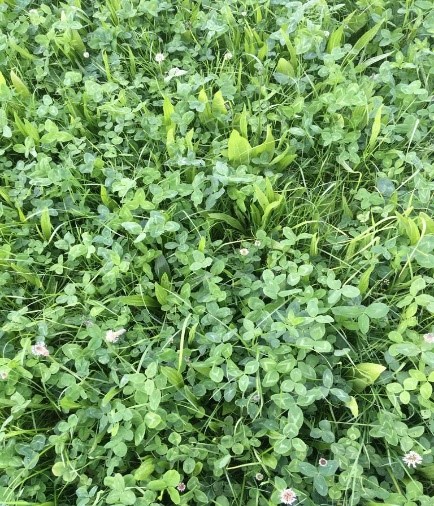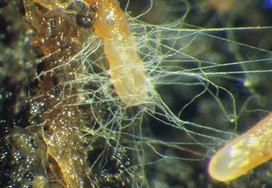Phosphate – Release the Hidden Reserves
 We have been encouraged by agronomists and fertiliser salesmen for decades to apply soluble phosphate fertilisers because they are readily available to the plant. But would you accept any other purchase where 75% of your investment becomes unavailable after just six weeks?
We have been encouraged by agronomists and fertiliser salesmen for decades to apply soluble phosphate fertilisers because they are readily available to the plant. But would you accept any other purchase where 75% of your investment becomes unavailable after just six weeks?
You read that correctly – 75% of phosphate fertiliser is unavailable after just six weeks. With TSP at £830/tonne that’s a huge financial loss.
Why the loss? - Phosphorous is a strongly negatively charged mineral. This means that it bonds rapidly to positively charged minerals – in high pH soils this is Calcium, in low pH soils this is Iron, Manganese and Aluminium.
Do I need phosphate fertiliser? - A simple soil test of available nutrients won’t answer this question. You will need to spend a little more and test for soil stocks. High pH soils in particular are likely to have enough phosphate for several years, if not decades. Add to this the potential for targeting your organic manures exactly where they are needed, and you have your answer. If the answer is still yes, the solution may not be soluble P fertiliser. Although the P release from DAP/MAP/TSP is high in the first 6 weeks, it’s negligible after that. Rock phosphate will release little in the first 6 weeks but in subsequent months and years the release is nearly 10 times that of soluble P fertiliser. For shorter term cropping, Humic Acid granules combined with soluble P fertiliser will slow down the release and buffer the harmful effects (see below).
 So, how do I unlock the reserves?
So, how do I unlock the reserves?
- Plant diversity. All plant roots release different acid exudates to the soil and legumes in particular will release acids which break the Calcium-Phosphate bond, freeing up both minerals for the plant.
- Mycorrhizal fungi (MF). These invisible helpers associate with roots (increasing their area tenfold) to source and supply phosphate and other nutrients to the plant. They are destroyed by deep cultivation/ploughing and crucially by soluble phosphate fertilisers!
 To encourage MF, apply humic acid granules to the soil (broadcast alone or combine with N fertiliser), or inoculate seeds before sowing (some seed merchants can offer this service).
To encourage MF, apply humic acid granules to the soil (broadcast alone or combine with N fertiliser), or inoculate seeds before sowing (some seed merchants can offer this service).
“Taking a phosphate holiday” now has a new meaning as we can no longer afford to spend money on an input which is only 25% efficient and damages the ability of the soil to feed the crop. Even if your soil tests show adequate available P, taking these two measures will improve soil health and availability of other nutrients.
To review your use of fertilisers, especially Phosphorous in light of continued record high prices, contact Tom on 07496 760242 or e-mail tommalleson@fcgagric.com

Recent Articles
- Do You Know the Benefits of a Health and Heat Detection System?
- Have you Ordered Your Silage Inoculant?
- Growing More Grass With Less Nitrogen, Where Do I start?
- A Real Recognition of The Importance of Food Security or Simply A Reconciling of DEFRA Budgets?
- Silage Sheet Prices Available!
- Are Your Cows at Risk of Grass Staggers?
- Feed Late Afternoon and Calve in Daylight Hours!
- Q Fever
- Aerating Your Soil Without A Machine? – Gerard Finnan
- Why Are You Not doing a Soil Management Plan?

